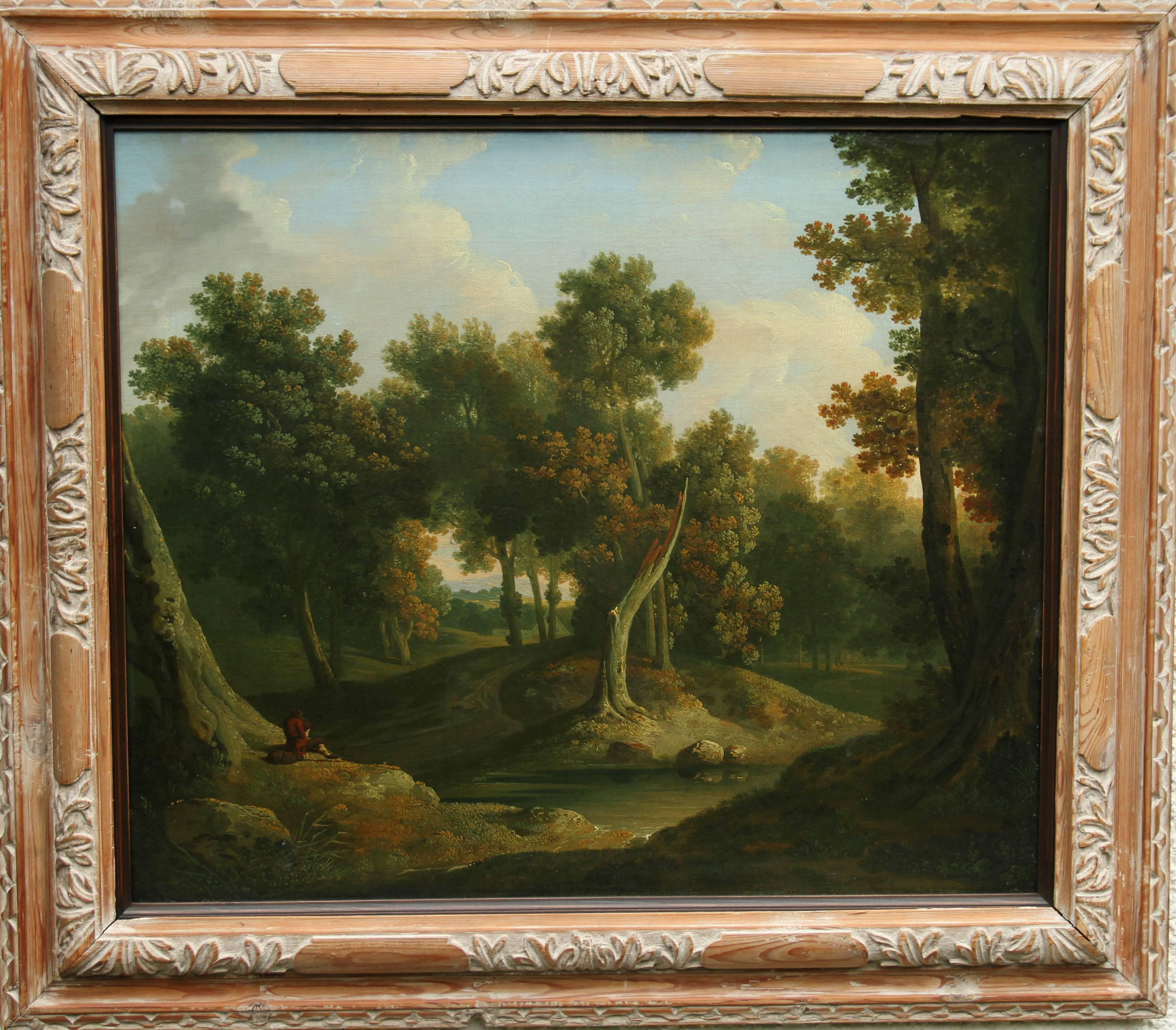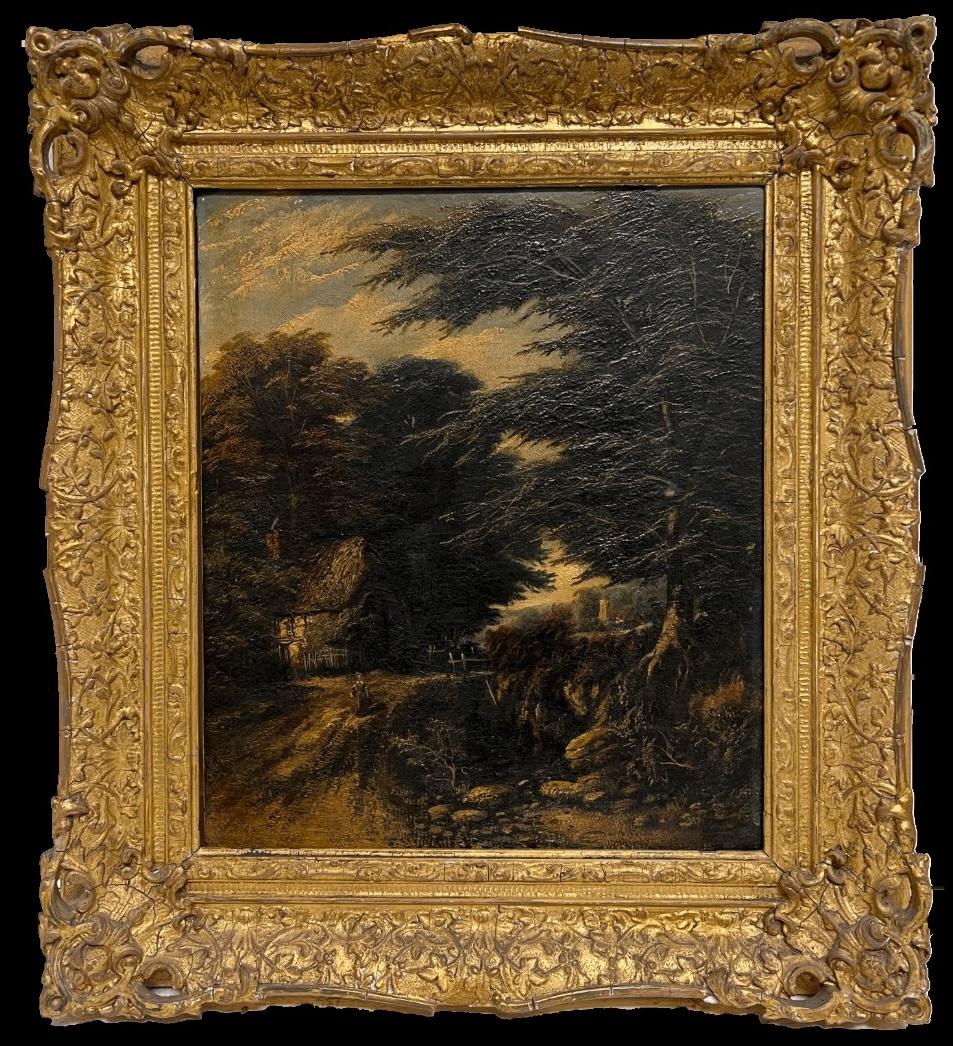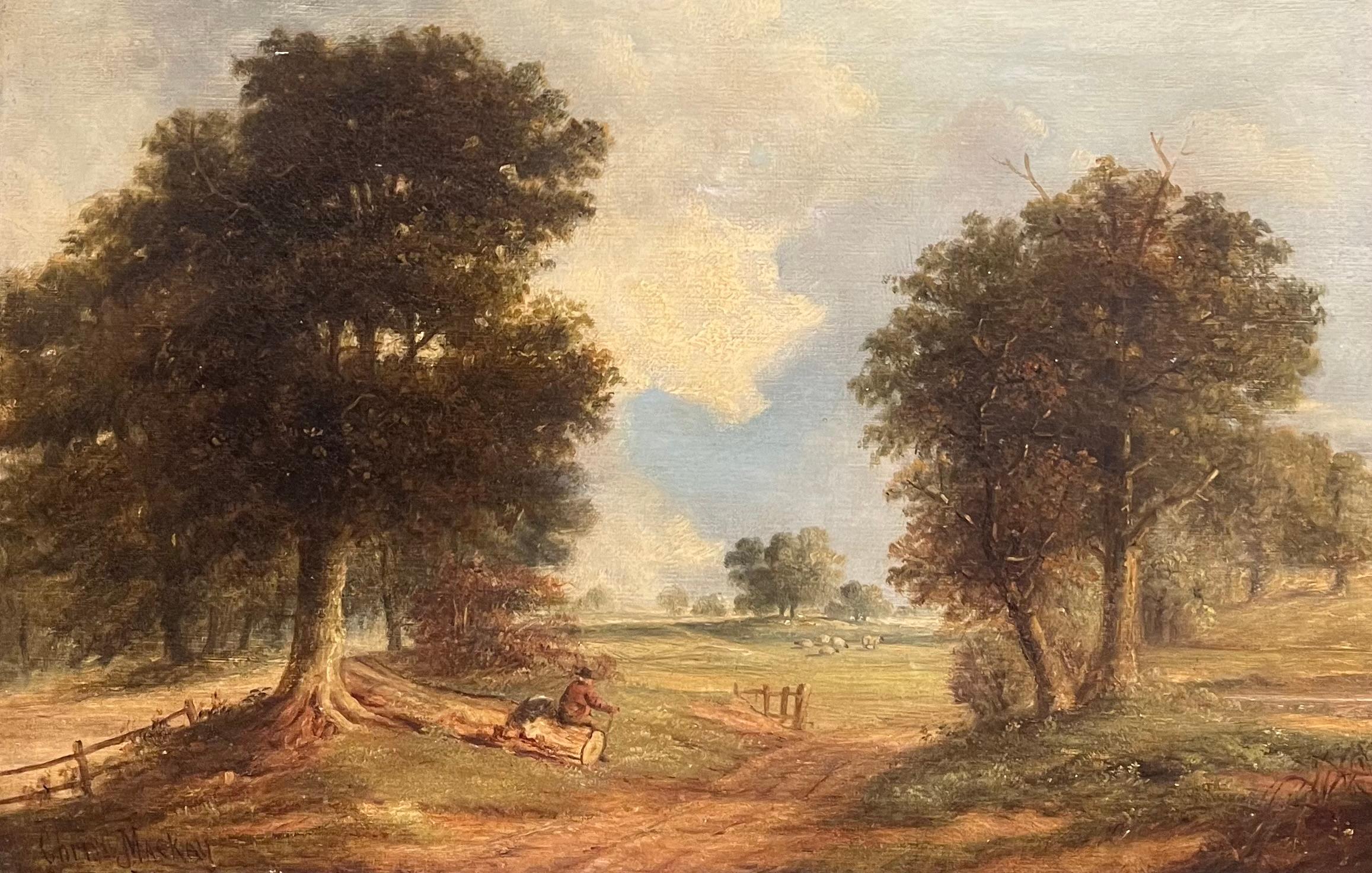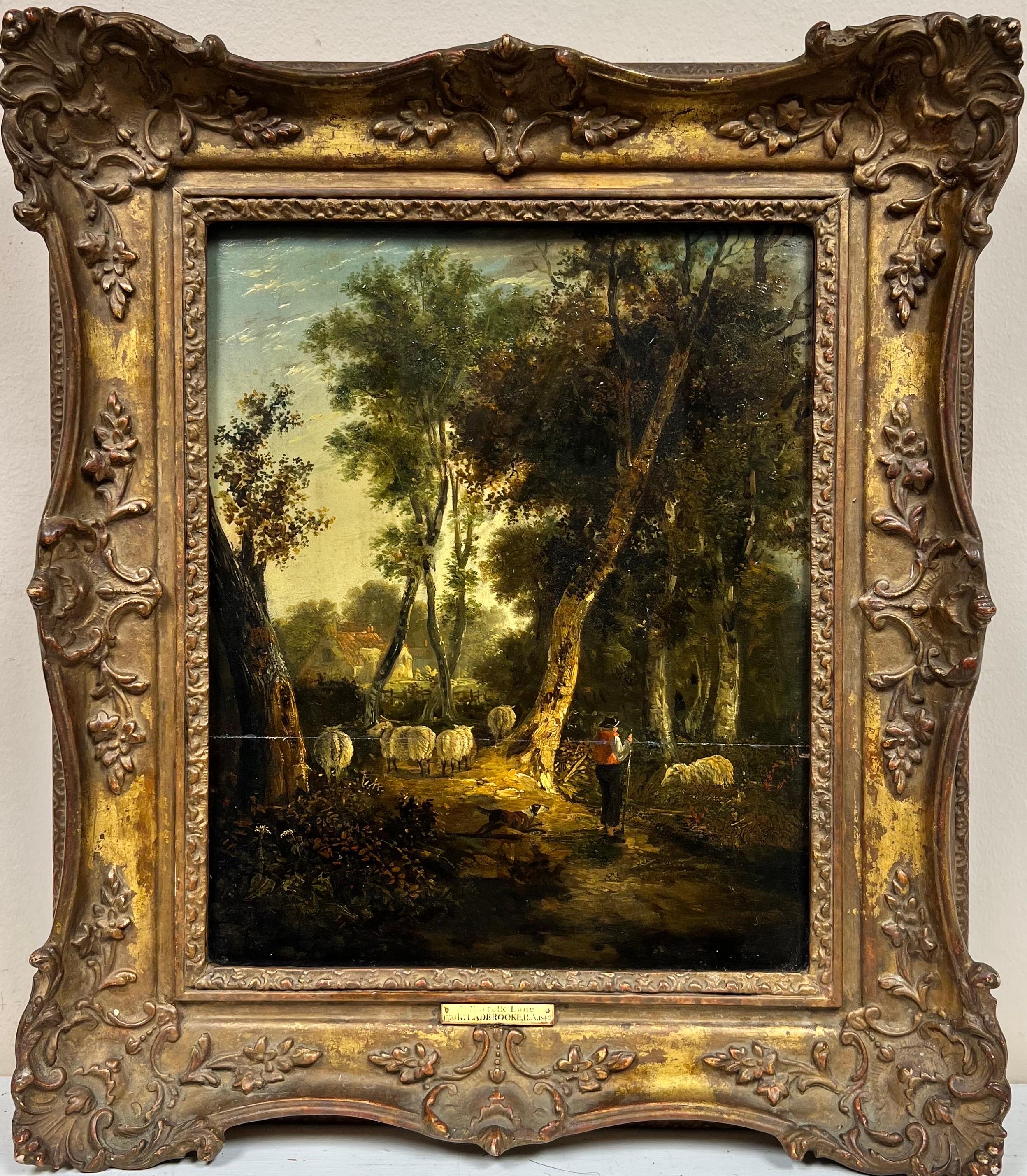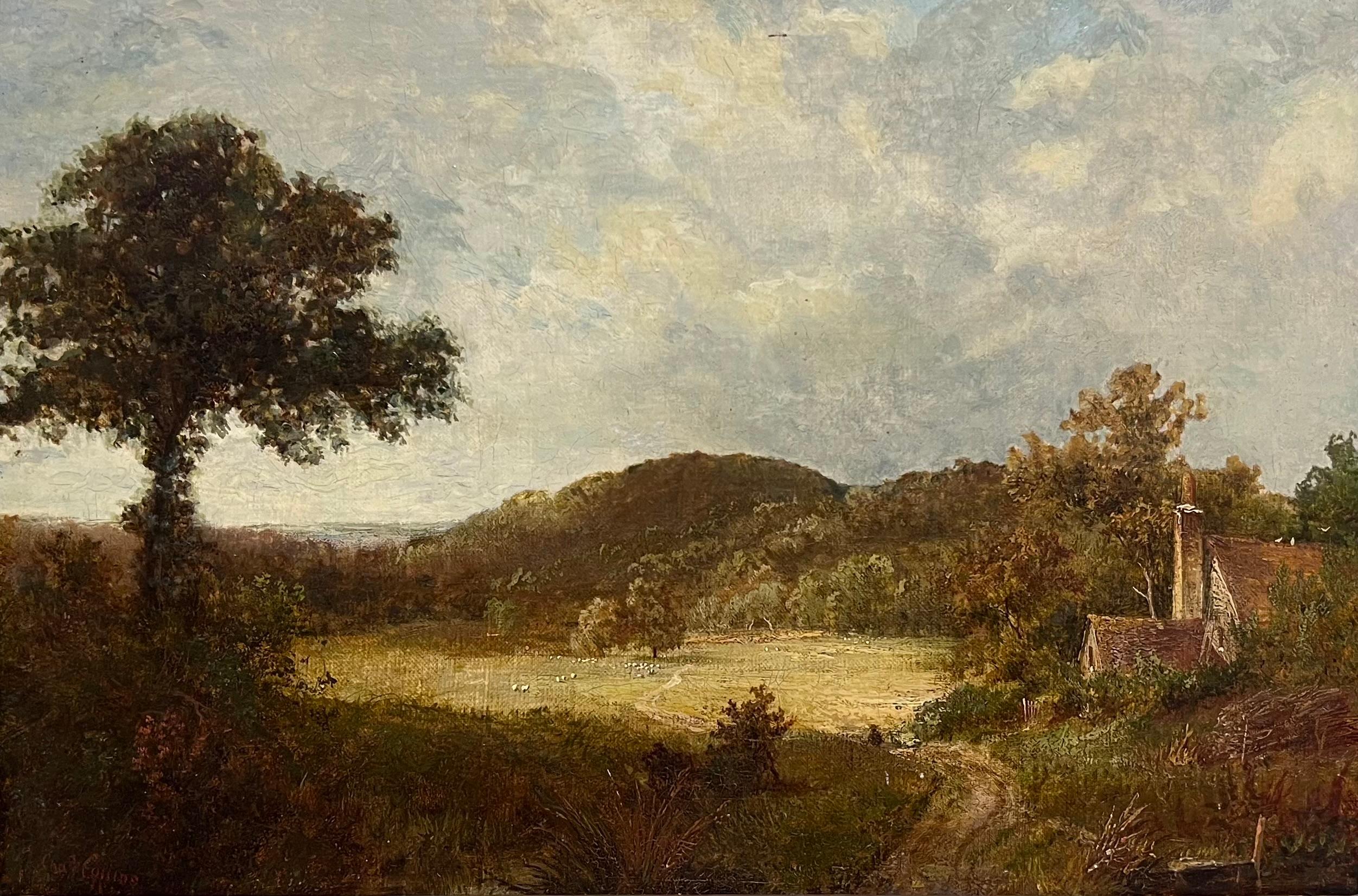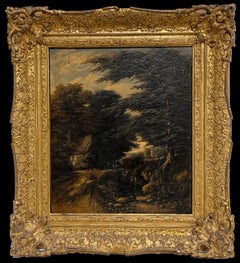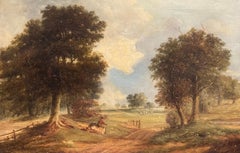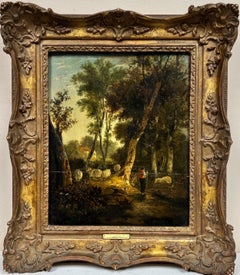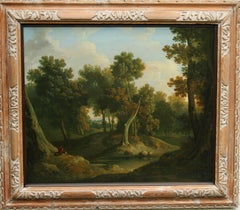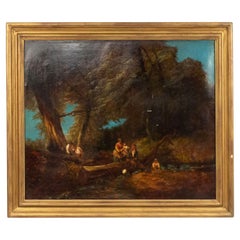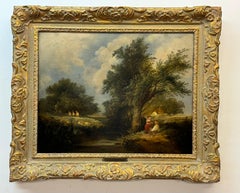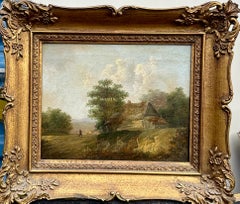Items Similar to Early 1800's English Oil Painting Figure in Rural Woodland Landscape, original
Want more images or videos?
Request additional images or videos from the seller
1 of 8
Early 1800's English Oil Painting Figure in Rural Woodland Landscape, originalc. 1800's
c. 1800's
$4,615.68
£3,400
€3,985.86
CA$6,355.83
A$7,113.35
CHF 3,723.58
MX$86,414.29
NOK 47,280.05
SEK 44,616.81
DKK 29,741.50
About the Item
Artist: English School, early 1800's, circle of John Constable (British 1776-1837)
Title: The Woodland Path
Medium: oil on canvas, framed, unsigned
Size: 12 x 22 inches
Picture: 9 x 18 inches
Provence: from a private collection in East Anglia, England
formerly with Christies, London (see stencil marks to the reverse)
Condition: overall very good and well restored. Frame has minor chips to the plaster.
- Creation Year:c. 1800's
- Dimensions:Height: 12 in (30.48 cm)Width: 22 in (55.88 cm)Depth: 1 in (2.54 cm)
- Medium:
- Movement & Style:
- Circle Of:circle of John Constable (1776 - 1837, British)
- Period:
- Condition:
- Gallery Location:Cirencester, GB
- Reference Number:1stDibs: LU509311066922
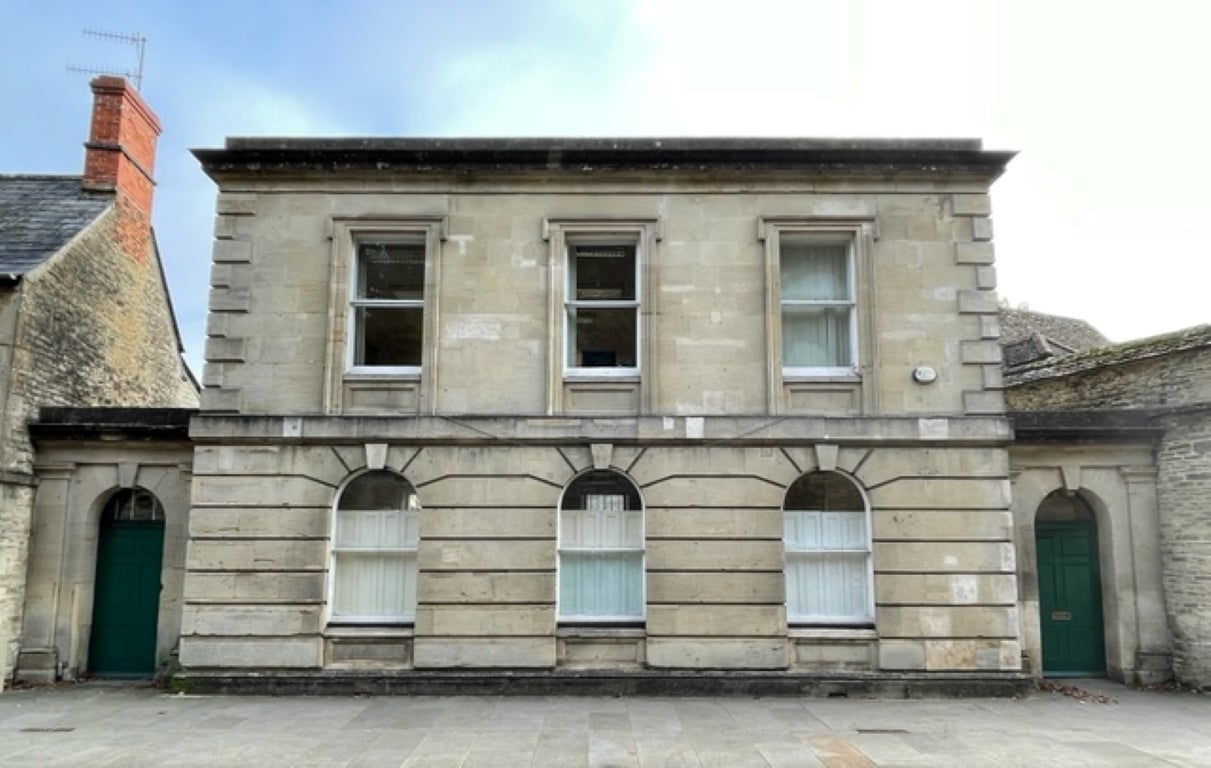
About the Seller
5.0
Platinum Seller
Premium sellers with a 4.7+ rating and 24-hour response times
Established in 1989
1stDibs seller since 2016
4,661 sales on 1stDibs
Typical response time: 1 hour
- ShippingRetrieving quote...Shipping from: Cirencester, United Kingdom
- Return Policy
Authenticity Guarantee
In the unlikely event there’s an issue with an item’s authenticity, contact us within 1 year for a full refund. DetailsMoney-Back Guarantee
If your item is not as described, is damaged in transit, or does not arrive, contact us within 7 days for a full refund. Details24-Hour Cancellation
You have a 24-hour grace period in which to reconsider your purchase, with no questions asked.Vetted Professional Sellers
Our world-class sellers must adhere to strict standards for service and quality, maintaining the integrity of our listings.Price-Match Guarantee
If you find that a seller listed the same item for a lower price elsewhere, we’ll match it.Trusted Global Delivery
Our best-in-class carrier network provides specialized shipping options worldwide, including custom delivery.More From This Seller
View AllFine 1830's English Oil Painting on panel Countryside Rural Lane with Gilt Frame
Located in Cirencester, Gloucestershire
The Country Lane
English School, circa 1830's period
oil on panel, framed in period antique gilt frame
framed: 19 x 17 inches
board: 14 x 13 inches
Provenance: private collection, En...
Category
Early 19th Century Victorian Landscape Paintings
Materials
Oil
19th Century English Oil Pastoral Landscape with Woodcutter and Cattle Grazing
Located in Cirencester, Gloucestershire
Pastoral Landscape with Figure and Cattle
English School, mid 19th century
signed lower front corner
oil on canvas, framed
Framed: 18 x 24.5 inches
Canvas: 14 x 21 inches
Provenance:...
Category
Mid-19th Century Victorian Landscape Paintings
Materials
Oil
Fine Large 19th Century Rural Traditional Landscape Signed Oil Painting Figures
Located in Cirencester, Gloucestershire
The Country lane
by Frans Hopfner (1840-1893) German
signed oil on canvas, framed
framed: 23.5 x 41.5 inches
canvas: 18 x 36 inches
provenance: private collection, UK
condition: very...
Category
19th Century Victorian Landscape Paintings
Materials
Oil, Canvas
Early 1800's English Oil Painting Wood Panel Norfolk Rural Lane Man & Dog
Located in Cirencester, Gloucestershire
Artist/ School: English School, early 1800's period, with frame plaque and inscription connecting to Ladbrooke.
Title: Norfolk Lane
Medium: oil on wood, framed
Framed: 20 x 17 i...
Category
Early 19th Century Victorian Landscape Paintings
Materials
Oil
Victorian English Signed Oil Painting 1870's Rural Country Landscape Gilt Framed
By Charles Collins
Located in Cirencester, Gloucestershire
The English Rural Landscape
by Charles Collins (British, circa 1870's)
signed & dated
oil on canvas, framed
framed: 17 x 24 inches
canvas: 12 x 18 inches
Provenance: private collecti...
Category
1870s English School Landscape Paintings
Materials
Canvas, Oil
Fine 1830's English Sporting Art Country House Painting Shooting Gentlemen Woods
Located in Cirencester, Gloucestershire
A Day Shooting in the Woods
English artist, circa 1830's period
signed with initials "S. E." lower right
oil painting on canvas, framed in period antique gilt frame from the first h...
Category
1830s English School Landscape Paintings
Materials
Canvas, Oil
You May Also Like
Old Master Wooded Landscape - Irish 1830 art woodland oil painting
By James Arthur O'Connor
Located in London, GB
A delightful large oil on canvas of a wooded landscape which dates to circa 1830 and is attributed to Irish artist James Arthur O’Connor. A superb painting and an excellent example o...
Category
18th Century Old Masters Landscape Paintings
Materials
Oil
$43,441 Sale Price
20% Off
Late 19th Century Oil Landscape of Figures in a Forest
Located in Queens, NY
Late 19th century pastoral oil painting of figures in forest by stream with fallen tree mounted in a gilt frame.
Category
Antique Late 19th Century Victorian Paintings
Materials
Paint
19th Century English Landscape w/Figures
By Edward Charles Williams
Located in San Francisco, CA
Beautiful landscape painting by Edward Charles Williams (1807-1881, British)
Oil on canvas
No visible signature
Canvas: 17" H x 21" W
Frame: 23" H x 27" W
Category
19th Century Victorian Landscape Paintings
Materials
Canvas, Oil
19th century English landscape with Cottage
By Charles Morris
Located in Woodbury, CT
Charles Morris (British, active mid-19th century)
Rustic Landscape with Herdsman and Cottage, ca. 1860–1870
Oil on canvas
In this tranquil rural view, Charles Morris presents an idy...
Category
1870s Victorian Landscape Paintings
Materials
Canvas, Oil
H. Stannava 19th Century Oil Painting of canvas with rural scene
Located in Braintree, GB
This 19th-century oil painting on canvas depicts the idyllic rural life of villagers. The scene captures a man and a woman seated in a carriage drawn by two horses. One horse appears...
Category
Antique 1860s European Paintings
Materials
Canvas
Oil Painting on Canvas English Landscape, Late 19th Century
Located in Casale Monferrato, IT
We present this splendid oil on canvas painting from the English school dating back to the end of the 19th century. The painting has a signature on the lower right but the author has...
Category
Antique Late 19th Century English Paintings
Materials
Canvas
$2,362 Sale Price
20% Off
More Ways To Browse
John English Oil Painting
19th C Landscape Painting
Woodland Oil Paintings
Oil Painting 12 X 18
English Rural Paintings
Paintings From 1800s
Oil Painting 1800
Christy Brown
19th Century Landscape Unsigned
19th Century Landscape Painting Unsigned
1837 Oil
Constable John
Landscape Oil Painting 1800
Antique Picture Frames 1800S
English Oil Painting 1800s
Antique Plaster Picture Frames
Rustic Scenes Painting
Farm Scene Paintings
